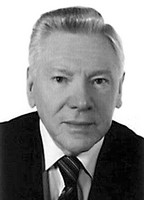Effects of hypoventilation breathing on physical working capacity during exercise to failure
Фотографии:
ˑ:
Teoriya i praktika fizicheskoy kultury №12 2016, pp. 55-57
UDC 796.01:612
Professor, Dr.Biol., member-correspondent of Russian Academy of Sciences N.A. Fudin1
PhD S.Y. Klassina1
Professor, Dr.Med. Y.E. Vagin2
1Research Institute of Normal Physiology named after P.K. Anokhin, Russian Academy of Medical Sciences, Moscow
2First Moscow State Medical University named after I.M. Sechenov, Ministry of Health and Social Development of the Russian Federation, Moscow
e-mail: klassina@mail.ru
The research objective was to study the effects of hypoventilation breathing on physical working capacity of individuals during exercise to failure on a cycle ergometer. Subject to survey were 13 apparently healthy young males of 18-22 years of age doing physical culture and sports on a regular basis. Each subject was surveyed twice, during the surveus he was asked to perform physical work to failure on a cycle ergometer at the constant pedaling speed of 1 rps. In between the 1st and the 2nd tests, the subjects have been learning hypoventilation breathing (HVB) technique for 30 days. It is shown that, against the background of HVB, there is an enhancement of ventilation and motor hypoxia tolerance. At the same time, there occurs an increase in the sympathetic effects, minute blood volume, tissue oxygen utilization, "economization" of respiration, which in the end leads to a significant improvement of physical working capacity.
Keywords: sports, failure to exercise, voluntary hypoventilation, physical working capacity.
References
- Karpman V.L. Dinamika krovoobrashcheniya u sportsmenov (Circulatory dynamics in athletes) / V.L. Karpman, B.G. Lyubina. – Moscow, 1982. – 135 p.
- Komantsev V.N. Metodicheskie osnovy klinicheskoy elektroneyromiografii (Methodical basics of clinical electroneuromyography) / V.N. Komantsev. – St. Petersburg, 2001. – 350 p.
- Kots Y.M. Sportivnaya fiziologiya. uchebnik dlya institutov fizicheskoy kul'tury (Sport Physiology. textbook for physical culture institutes) / Y.M. Kots. – Moscow: Fizkultura i sport, 1998. – 200 p.
- Fudin N.A. Fiziologicheskaya tselesoobraznost' proizvol'noy regulyatsii dykhaniya u sportsmenov (Physiological feasibility of voluntary regulation of breathing in athletes) // Teoriya i praktika fiz. kultury. – 1983. – № 2. – P. 21-22.
- Fudin N.A. Gazovy gomeostazis (proizvol'noe formirovanie novogo stereotipa dykhaniya) (Gas homeostasis (arbitrary formation of new breathing stereotype) / Gen. ed. K.V. Sudakov. – Tula: Tul'skiy poligrafist, 2004. – 216 p.
- Fudin N.A., Khadartsev A.A., Orlov V.A. Mediko-biologicheskie tekhnologii v sporte (Medicobiological technologies in sport) / Ed. by RAS and RAMS acad. S.P. Smirnov. – Moscow, 2011. – 460 p.
- Fudin N.A. Vzaimosvyaz' pokazateley myshechnoy i serdechno-sosudistoy sistem pri vozrastayuchshey fizicheskoy nagruzke u lits, zanimayushchikhsya fizicheskoy kul'turoy i sportom (Correlation of muscular and cardiovascular system characteristics at step load in persons engaged in physical culture and sport) / N.A. Fudin, S.Y. Klassina, S.N. Pigareva // Fiziologiya cheloveka. – 2015. – V. 41 – № 4. – P. 82-90.
- Fudin N.A., Klassina S.Y., Pigareva S.N., Vagin Y.E. Analiz pokazateley elektrokardiogrammy i elektromiogrammy v moment prekrashcheniya vypolneniya intensivnoy fizicheskoy raboty u lits, zanimayushchikhsya fizicheskoy kul'turoy (Analysis of electrocardiogram and electromyogram indices at the time of termination of strenuous exercise in persons doing sports) // Sportivnaya meditsina: nauka i praktika. – 2015. – № 3. – P. 31-37.
Received 06.04.2016 г.



 Журнал "THEORY AND PRACTICE
Журнал "THEORY AND PRACTICE